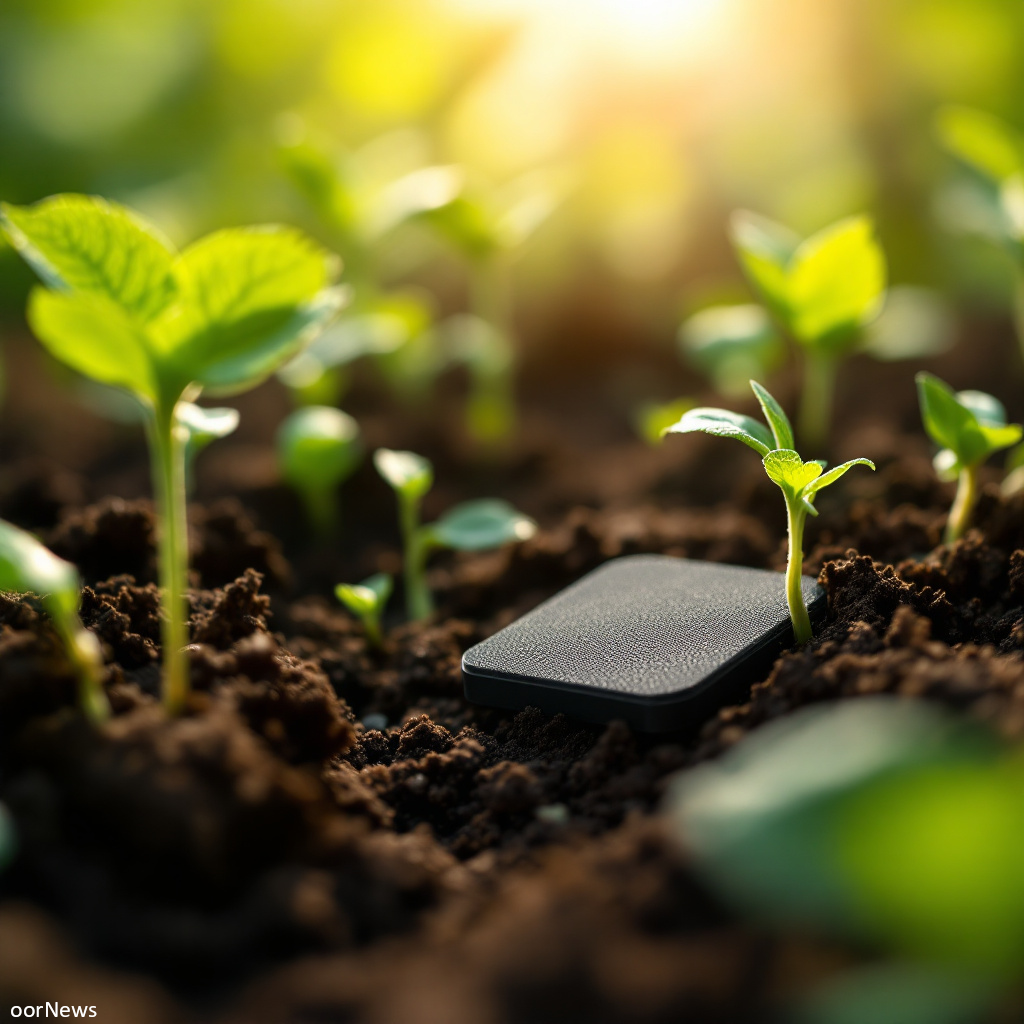Your cart is currently empty!

Biodegradable Sile Sensors Promise Greener, Smairter Fairmin

Engineers at e University o Glesga hae developed a grundbrakkin screen-printed sensor aat can be left tae brak doon in sile efter eese. E sensor is meant tae track sile traits sic as pH an temperature. It is made fae materials aat, fan they decay, serve as plant feed.
E sensor is pairt o the international TESLA project. TESLA, short for Transient Electronics for Sustainable ICT in Digital Agriculture, is a £1.8m effort led by Glesga. E project jynes haunds wi McGill University in Canada, Tampere University an VTT Technical Research Centre o Finland Ltd, as weel as e Łukasiewicz Research Netwark an CSEM in Switzerland. E team aims tae bigg a fu system far biodegradable patches wirk wi solar cells, supercapacitors, an rewarkable electronic modules tae gie a complete, eco-freendly solution for digital agriculture.
For e study, scientists eesed screen-printin—a method akin tae aat seen in sark design—tae form conductive tracks on a biodegradable plastic base eesin graphene-carbon ink. A layer o molybdenum disulfide is then printed ower e tap. In lab tests, e sensors shawed steady results in solutions fae pH 3 tae pH 8 ower twa wikks. They wir even able tae note traces o ethephon, a chemical eesed tae spur plant growth aat micht be hairmfu if it leaks intae watter.
“Reliable feed production is een o the warld’s maist pressin problems, wi mair nor 800 million fowk aroond e warld sufferin fae malnutrition e day. Digital agriculture cuid be the key tae maximisin wir ability tae produce eneuch feed for a growin population,” said Dr Joseph Cameron o the James Watt Schuil o Engineerin.
Co-author Andrew Rollo spak on e impact o the wark. “E system we’ve developed cuid ging a lang wey tae cuttin doon e carbon fitprint o digital agriculture. E sensors theirsels can be plooed back intae the pairks tae help nurture craps, an e electronic modules wi less environmentally hairmfu printed circuit materials can be re-eesed for several year. Wir analysis suggested aat replacin e sensors eence ilka three month cuid reduce the environmental impact o the system by 66%, an 79% ower five year compared tae disposin o the hale device ilka time,” he explained.
Professor Jeff Kettle, aat led e research, stressed e need for chynge. “We urgently need tae fin a wey tae mak digital agriculture mair sustainable in e years tae come. Currently, aroond 80% o the warld’s electronics heid straucht tae landfill eence they’ve raxed e eyn o their eesefu life, fit creates massive environmental an public halth challenges fae the toxic materials aat mony o them contain. We’re keen tae continue expandin wir biodegradable sensor’s ability tae detect ither key indicators o plant growth an sile halth. Aat cuid include addin sensitivity tae ‘forever chemicals’ like PFAs, aat hae significant environmental impact.”
E research, reported in ACS Applied Electronic Materials, brings a new approach tae digital agriculture. E sensor patches wark alangside conventional electronics. Thegither, they help fairmers bigg a clear pyntur o crap halth an sile conditions. By haudin ontae the pairts aat canna be composted for re-eese, e setup laaers waste an cost fyle aimin tae cut doon e burden on naiture. E wark is supported by the Engineerin an Physical Sciences Research Cooncil an e São Paulo Research Foondation.
Iss new technology cuid licht e wey tae mair efficient feed production in a time fan e demand for feed is expected tae rise steeply.
Leave a Reply